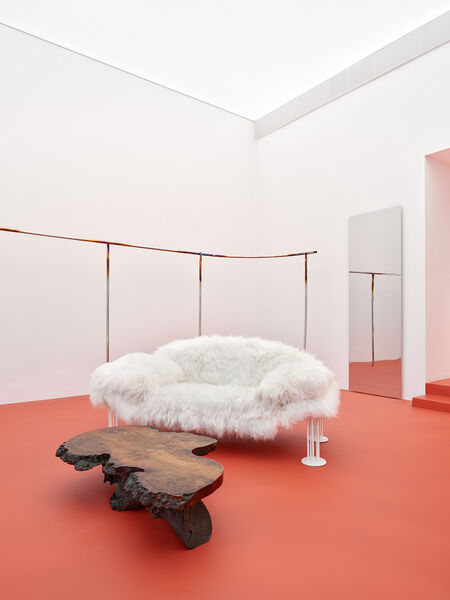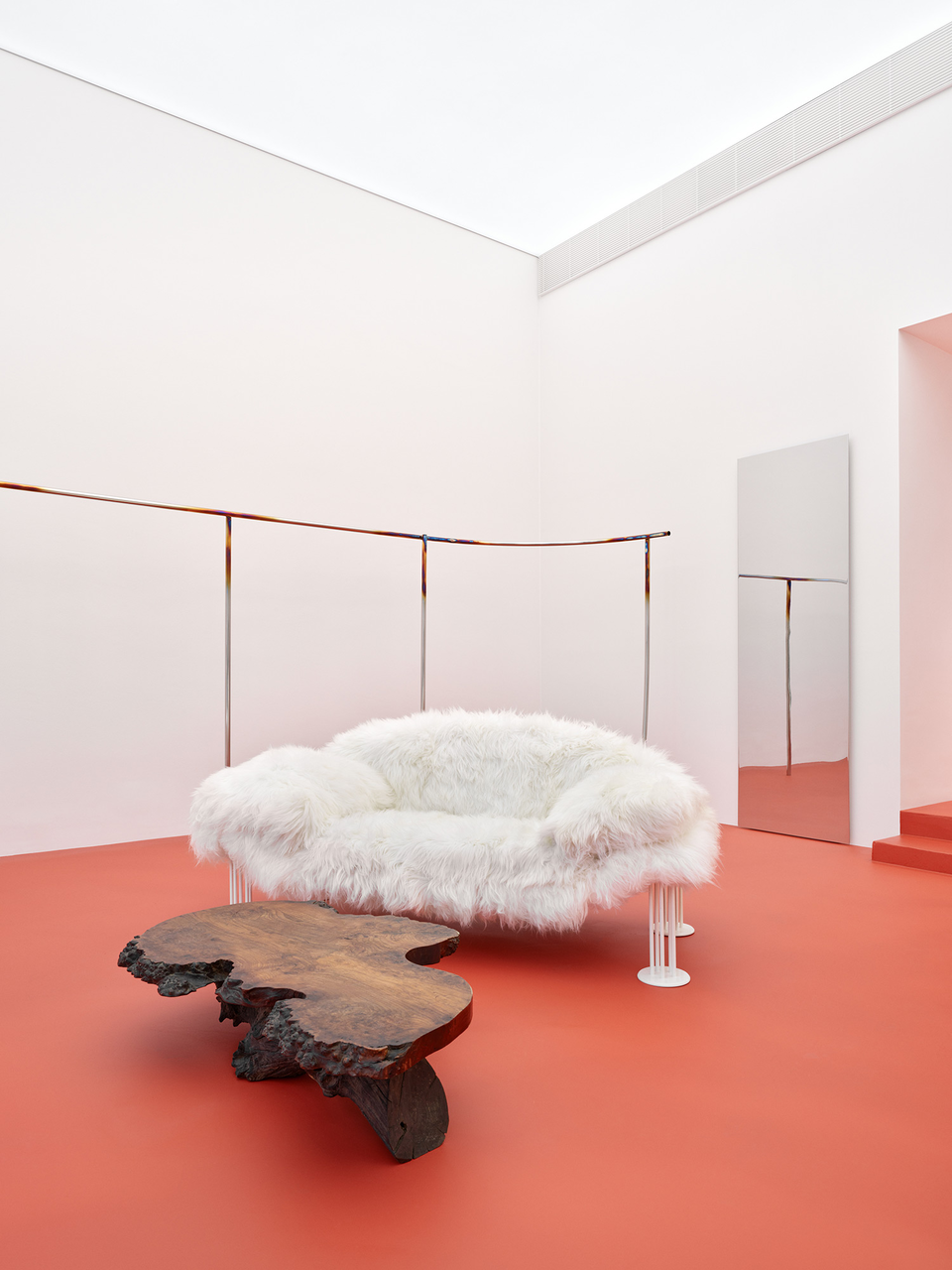




Filippa K has reopened its flagship store in Helsinki with an updated store concept, embodying the fashion house’s unique take on Scandinavian identity. The interior balances the raw and the refined by abstracting references from nature into a new expression. The concept is a collaboration between former Creative Director Liisa Kessler, her Filippa K team, and Profan: the Swedish architect trio of Disa Braunerhielm, Maximilian Olsson and Anton Bogårdh. As a nod to Liisa’s Finnish heritage, Helsinki is the first location to be redesigned with Filippa K’s new identity and display its updated logotype. The opening is the first step in the Swedish brand’s international expansion strategy which will see it entering new markets outside of Northern Europe.
The new flagship extends across two floors of Helsinki’s Kämp Galleria, built in the late 1800s. The location was once home to the famous Strindberg art salon and was later transformed into an iconic café and restaurant connected by a grand staircase — the centrepiece of Filippa K’s store today. Functioning as an ever-evolving gallery as well as a retail space, it features custom pieces from artists that align with the house’s values alongside a curated selection of vintage furniture.


Upholstered Sheepskin Sofa
The sofa placed in the central space of the ground floor is a vintage 1980s Hain & Thome piece designed by Burkhard Vogtherr. The forgotten German classic of postmodern design was originally made with multiple leg styles; the style chosen is from the AIR line. In preparation for the Helsinki store, it has been upholstered with chrome-free tanned Swedish sheepskin, a by-product of the Swedish food industry. It measures 1.7 metres in length, 75 centimetres in depth and 73 centimetres in height.
Cash Desk by Lukas Wegwerth
The cash desk is an original piece designed and crafted by Berlin-based artist Lukas Wegwerth that stands 1.1 metre tall and 72 centimetres wide. Its concept came from the idea of modularity — creating a form that is never final and can be reconfigured to serve multiple purposes throughout its existence. The desk was created by pouring sections of recycled aluminium into open mould sand casts, developed with H. & PH. Behr, a heritage Berlin-based foundry that dates back to the early 1800s. The aluminium is heated to a low temperature of 700° (compared to the typical setting of 1400° for metals), saving energy. The flat surface of each tile is left to naturally cool while the rest sets in sand, resulting in a textured effect that evokes the surface of water and is unique for each plate. These sections are then combined in a modular way to suit the need of the space. Although aluminium is not naturally found in nature, the material is durable and long-lasting once created. The recycled aluminium used for the desk can be fully recycled again, supporting the shared values of sustainability and circularity by both the artist and Filippa K.



A heat technique is applied to the three fitting rooms: Inside, each room features brushed steel plates across the back wall and floor. The metal is hand-treated with a heating technique personally achieved by the store’s architects, resulting in a one-of-a-kind design for every panel. The perpendicular walls are mirrored to create the illusion of an infinite reflection. Reclaimed wooden stools sit in the corner of each fitting room.
Brushed steel clothing rails with organic curved shapes bend and stretch across each area of the store, echoing the reflections of water.


The same technique is used to weld the rails together that leaves the raw effect from the process exposed, resulting in unique multi-tonal shapes of thin film interference at each rail intersection.


Sculptural Garden Chair
The chair in the centre of the upper level womenswear section was crafted by an anonymous sculptor in 1970s France known for his unique objects. Its aesthetic fits within the trend of morphic art at the time, like the work of André Bloc. Designed to resemble a stone, the one-of-a-kind piece has sat outdoors for decades developing a natural patina. It was discovered by Jarno Kooijman, the founder of Fundamente, a Rotterdam-based gallery specialising in 20th century design and objects with interesting histories. The chair was created by moulding and sculpting styrofoam into a faux concrete texture, and finishing it with a micro layer of stones which has allowed it to age naturally, with moss growing on it over the years. It measures roughly 1 metre in height, length and depth, creating a striking spherical statement in the store.
Organic Wooden Chair
The wooden chair situated amongst the menswear and accessories dates back to mid-19th century Europe, and was purchased from Belgian selector Boris Devis of Goldwood by Boris. It embodies the Japanese design concept of wabi-sabi: the human connection with nature, and finding perfection in the imperfect. While the artist is unknown, it would have been made by a local craftsman of folk art inspired by the natural beauty of the woods around him. The base of the chair was cut in one piece from the trunk of an ancient birchwood tree with its original fissures and gaps preserved. The seat and armrests are made from pine. The piece measures 1.1 metre tall with a 52 cm width and 49 cm depth.

